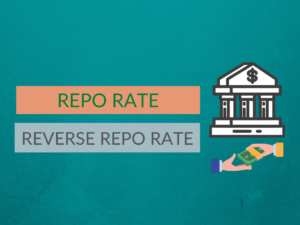What is Bank Rate?
Bank rate refers to the interest rate at which central banks in a country lend money to commercial banks. It is also known as the discount rate or the base rate. The bank rate is set by the central bank as a tool to control inflation and stabilize the economy.
Examples of Bank Rate
– In the United States, the bank rate is set by the Federal Reserve. As of January 2022, the bank rate in the US is 0.25%.
– In the United Kingdom, the bank rate is set by the Bank of England. As of January 2022, the bank rate in the UK is 0.1%.
Uses of Bank Rate
1. Controlling Inflation: When the economy is growing too quickly and inflation is rising, the central bank can raise the bank rate to make borrowing more expensive. This reduces consumer spending and slows down economic growth, helping to curb inflation.
2. Encouraging Saving: A higher bank rate makes saving more attractive as people can earn higher interest on their savings. This encourages individuals to save rather than spend, which can help stabilize the economy.
3. Managing Exchange Rates: The bank rate can influence the exchange rate of a country’s currency. If a central bank raises the bank rate, it attracts foreign investors looking for higher returns, leading to an increase in the demand for the currency and an appreciation in its value.
What is Repo Rate?
Repo rate, short for repurchase rate, is the rate at which the central bank lends money to commercial banks for a short period, usually overnight. It is an instrument of monetary policy used to control liquidity in the economy and influence interest rates.
Examples of Repo Rate
– In India, the repo rate is set by the Reserve Bank of India (RBI). As of January 2022, the repo rate in India is 4.0%.
– In South Africa, the repo rate is set by the South African Reserve Bank. As of January 2022, the repo rate in South Africa is 3.75%.
Uses of Repo Rate
1. Liquidity Management: By adjusting the repo rate, the central bank can manage the liquidity in the banking system. Lowering the repo rate injects liquidity into the system, making it easier for banks to borrow and lend. Conversely, raising the repo rate reduces liquidity, making it harder for banks to borrow and incentivizing them to reduce lending.
2. Controlling Inflation: Similar to the bank rate, the repo rate can be used to control inflation by influencing the cost of borrowing for commercial banks. If inflation is high, the central bank can raise the repo rate to discourage borrowing and spending, thereby reducing inflationary pressures.
3. Signal for Monetary Policy Stance: Changes in the repo rate serve as signals for the overall monetary policy stance of the central bank. A rate cut indicates an accommodative monetary policy, promoting economic growth, while a rate hike indicates a tightening monetary policy to curb inflation.
Differences Table: Bank Rate vs. Repo Rate
| Difference Area | Bank Rate | Repo Rate |
|---|---|---|
| Definition | Interest rate at which central banks lend money to commercial banks | Interest rate at which central banks lend money to commercial banks for a short period |
| Usage | Control inflation, encourage saving, manage exchange rates | Liquidity management, control inflation, signal for monetary policy stance |
| Loan Duration | Long-term loans | Short-term loans, usually overnight |
| Interest Calculation | Simple or compound interest | Simple interest |
| Effect on Interest Rates | Indirectly affects lending rates in the economy | Directly affects short-term borrowing rates for commercial banks |
| Frequency of Change | Changes infrequently | Changes more frequently, even within a month |
| Level of Control | Central bank has more control over the bank rate | Commercial banks can have some influence on the repo rate |
| Target Audience | Commercial banks | Commercial banks and other financial institutions |
| Impact on Currency | Indirect impact on exchange rates | Direct impact on exchange rates |
| Long-Term Economic Effect | Affects long-term economic growth and inflation | Affects short-term liquidity and interest rates |
Conclusion
In conclusion, the bank rate and repo rate are both instruments used by central banks to manage the economy, control inflation, and influence interest rates. However, they have key differences in terms of loan duration, interest calculation, frequency of change, level of control, and impact on interest rates and exchange rates.
People Also Ask:
Q: How does the bank rate affect borrowing costs for commercial banks?
A: The bank rate indirectly affects borrowing costs for commercial banks as changes in the bank rate can lead to changes in interest rates charged by commercial banks on loans.
Q: What happens if the repo rate is increased?
A: Increasing the repo rate reduces liquidity in the banking system, making it more expensive for commercial banks to borrow from the central bank. This can lead to higher interest rates for borrowers, including individuals and businesses.
Q: Does the bank rate influence the interest rates offered to consumers?
A: Yes, changes in the bank rate can indirectly influence the interest rates offered by commercial banks to consumers. When the bank rate increases, borrowing costs for commercial banks tend to increase, leading to potential increases in consumer loan and mortgage rates.
Q: How often does the repo rate change?
A: The repo rate can change more frequently, depending on the monetary policy stance of the central bank. It can be adjusted within a month or kept unchanged for an extended period, depending on economic conditions.
Q: Can commercial banks influence the repo rate?
A: While the central bank sets the repo rate, commercial banks can have some influence through discussions and consultations with the central bank. The central bank takes into account various economic factors and inputs from commercial banks before making changes to the repo rate.




